Deep Ancestry and a Rediscovered Scottish Tribe
May 1, 2012 by ramona
Filed under Articles, Genealogy Technology, Introduction to Genealogy, Latest News
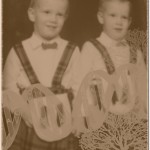 Have you heard the term “Deep Ancestry” a process that uses both mtDNA and Y-DNA to find the most ancient roots on your family tree?
Have you heard the term “Deep Ancestry” a process that uses both mtDNA and Y-DNA to find the most ancient roots on your family tree?
This week Scotland’s DNA Project has come forward with some groundbreaking results using this process. Population Geneticist Dr. Jim Wilson of Edinburgh University along with journalist Alistair Moffat reported that the project has found one of Scotland’s long lost tribes.
The tribe called the Maeatae lived about 208 AD in the area around Stirling. History documents them in the works of the Roman writer Dio Cassius who recorded them as a hostile tribe living close to the Antonine Wall and in Adomnán’s Life of Columba (Saint Adomnán of Iona (627/8 – 704)). All references to the tribe disappeared after the 8th century…until now.
Moffat best known for his book The Scots: A Genetic Journey states “When the great Roman emperor Septimius Severus invaded Scotland with the largest army ever seen north of the Tweed, 40,000 legionaries and auxiliaries and a supporting fleet, he fought the Maeatae. They were mentioned by Roman historians as a fierce people and much later, noted by Adomnan, the biographer of St Columba. And then they disappeared from history,” Moffat goes on to say, “Now they are found. DNA has uncovered a high concentration of a distinctive marker clustered around Stirling and the foothills of the Ochils – the homeland of the fierce Maeatae. These are stories only DNA can tell.”
Other results from this study include:
- Nearly 100 distinctive Y-DNA groups have been found thus far
- One percent of Scottish men are descended from Tuareg and Berber Tribesmen of the Sahara
- The basic lineages of Scotland and England are similar
- Actor Tom Conti is a descendant of Napoleon Bonaparte
Test participants paid around 170 pound to have their DNA tested. From these, lineages were discovered for one Viking, one Arab, a Hebridean and three Saxons.
The future of the project promises even more excitement as Dr. Wilson reveals that they will be looking even closer at Neanderthal DNA in Scotland.
Finding the Living with Megan Smolenyak
April 29, 2012 by ramona
Filed under Articles, Latest News
 You may have see genealogist Megan Smolenyak on Good Morning America or the Today Show. You may be more familiar with her from her books, her work with popular genealogy programming or from her numerous speaking engagements.
You may have see genealogist Megan Smolenyak on Good Morning America or the Today Show. You may be more familiar with her from her books, her work with popular genealogy programming or from her numerous speaking engagements.
From her dedication in finding the family of soldiers who are unaccounted for from past conflicts, (as a consultant with the U.S. Army), to her work as an outspoken advocate of using DNA to trace your roots Ms. Smolenyak is definitely a genealogist on a mission.
If you are a fan you will not want to miss the opportunity to view her very first webinar “Reverse genealogy: Finding the Living”. Even better, you can view it free up until May 7, at Legacy Family Tree.
Reverse Genealogy
So what is reverse genealogy? In a nutshell, it is taking information discovered about your ancestors and using it to move forward in time in order to find living relatives.
The Webinar begins with an informative questionnaire that lists why people want to find the living.
The top two reasons:
– To find living cousins
– To solve mysteries using DNA
In order to “find the living” Smolenyak uses two methods that she describes as
- Broadcasting, a method that incorporates the use of message boards and Social Networking to make it easy for people you are looking for to find you.
- Seeking, an aggressive research method where you actively work to seek out individuals with common ancestors.
In her webinar you will learn about some fantastic resources, research guidelines and strategies that will help you to conduct an effective cousin search in addition to some great tips on how to approach your long lost relatives once you have found them.
If you want to start a reverse genealogy project, you will not want to miss this chance to learn from a pro. Join us on the Genealogy News and Events forum for a direct link to the webinar.
Why Learn Genealogy?
April 27, 2012 by ramona
Filed under Articles, Getting Started in Genealogy, Introduction to Genealogy, Latest News
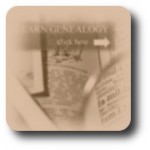 Have you ever wondered why genealogy and family history research is so popular? What is it that drives people to spend so much of their money and time pursuing their ancestral past?
Have you ever wondered why genealogy and family history research is so popular? What is it that drives people to spend so much of their money and time pursuing their ancestral past?
On a personal level it may start with a question of self-identity “Who am I?” or a need to know where we belong “Where do I come from?”
In 1964 psychologist H. J. Sants, coined the term “Genealogical Bewilderment” in describing identity issues in adoptees, Sants theory declared that adopted children experienced a greater degree of stress than children raised by their genetic parents due to an absence of knowledge of their origins.
In 1952 a letter was written to the Journal of Mental Health by psychiatrist E. Wellisch, titled “Children without genealogy: The problem of adoption” in which he said:
“Knowledge of and definite relationship to his genealogy is … necessary for a child to build up his complete body image and world picture. It is an inalienable and entitled right of every person. There is an urge, a call, in everybody to follow and fulfill the tradition of his family, race, nation, and the religious community into which he was born. The loss of this tradition is a deprivation which may result in the stunting of emotional development.”
While not everyone who engages in genealogy as a hobby is suffering from an identity crisis, there is still an echo of truth in these words.
Perhaps we feel a little disengaged from the far off shores of our homelands or maybe the answer lies in the theory of ancestral memory as expressed by Carl Jung’s “collective unconscious”, Freud’s “archaic remnants” or the more modern idea of “genetic memory”. All theories which at their heart suggest that within each individual is a body of knowledge or a memory passed down through our ancestors.
Speculation and pseudoscience aside there is no doubt that genealogy has become a popular hobby. The most current report on market trends for genealogy by Global Industry Analysts, Inc. (statistics as of January 11, 2012) show that between US$1000 to US$18000 is spent per year on genealogy research by over 84 million genealogists.
Ultimately, the why of genealogy research can only be answered by the individual pursuing it and perhaps it is best left at that. However, one thing all of us addicted to climbing our family trees can agree on is that it is one of the most rewarding hobbies around.
If you are ready to begin learning about your family tree start here at Genealogy Beginner.
The Language of Genealogy: Understanding Old Documents
April 24, 2012 by ramona
Filed under Articles, Getting Started in Genealogy, Introduction to Genealogy, Latest News
 Today’s language is quite different from the daily language of our ancestors. Some words and their meanings have all but disappeared from the modern lexicon.
Today’s language is quite different from the daily language of our ancestors. Some words and their meanings have all but disappeared from the modern lexicon.
For the Genealogy Beginner this can make reading old documents confusing if not outright frustrating.
Archaic Genealogical References
Recently I was assisting a novice genealogist in transcribing a document from the 1600s that they had been working on for some time. A huge part of the problem they were facing stemmed from an unfamiliarity of the language of the times. To make it worse the unfamiliar words were written in an abbreviated form of the times.
Transcribing old documents can be difficult enough on its own. The addition of archaic words and abbreviations that have no meaning in modern language simply makes the process nearly impossible; especially while simultaneously struggling with a old script in an aged document.
In this case, the words that were causing the problem were “Umqhuille”, “Relict” and “Milner”. Umqhuille is a word meaning deceased and Relict means Widow.
Milner in this time was a merchant who dealt in small, fancy goods. While the modern meaning of the word has changed to mean a seller of hats, the etymology of the word derives from Milan, from where many of these goods were once imported.
From working out the words, we were able to:
- Asses that the ancestor in question was deceased at the time of a particular baptism
- Recognize that one person on the document –Relict – was his wife
- Understand what his profession was
From this information, we added an additional generation to the family tree as the Umqhulille and relict named were the grand parents of the individual being baptized. This transcription also helped track down both a Will and a Sassine, which led to a great deal more information on the family researched.
This purpose of this little story is to demonstrate the importance of becoming familiar with the language of our ancestors. It is more than likely that novice Family tree hunters will run across some common and not-so-common old words while digging for their roots. For this, A genealogical dictionary would be a very helpful tool to have on hand.
Join us on the Ask a Genealogist Forum for a list of links to some excellent resources for archaic words, old occupations, medical terms and more.
Genealogy Scams and Red Flags
April 22, 2012 by ramona
Filed under Articles, Getting Started in Genealogy, Introduction to Genealogy, Latest News
 With the growing popularity of genealogy and family history, it is easy to find hundreds of internet sites dedicated to the subject; from sites claiming to have huge databases to others that promise to contain information relevant and specific to your family tree, surname or coat of arms.
With the growing popularity of genealogy and family history, it is easy to find hundreds of internet sites dedicated to the subject; from sites claiming to have huge databases to others that promise to contain information relevant and specific to your family tree, surname or coat of arms.
Beginning Genealogists should be aware that not every genealogy site is as good as the claims they make.
Genealogy Scams
While a great deal of family tree sites are trustworthy, newcomers to genealogy can sometimes fall prey to less reputable sites that exist to take your money and offer you zero results or results you could have found for free. Additionally family tree research novices should beware of “genealogy sites” that exist for the sole intention of gathering your personal information for the purpose of email marketing or worse…identity theft.
Before you enter your details for any family tree site, research the site to see what they are claiming to offer.
A reputable genealogy site will:
- List exactly the information, records and databases you can access once you have signed up
- State the locations and periods for which records are available
- State the source of the records or information they hold
Top Three Genealogy Site Red Flags:
#1. A site that makes generalized claims such as “Largest Genealogy Database”, “Millions of Names Free”, “Your Family Story” or simpler claims to “marriage or birth records” without any detail provided…should be avoided.
#2. Your “Free Search” results are ambiguous. For example, a search return that says they have found X-number of results on the name you entered without details. A good test of this kind of result is to type in a nonsense name such as Harry I. Balls or Jemima Pancakes to see how many results you get.
#3. A site that only provides an online contact form and does not list contact information such as a telephone number or address is not a good bet. A site without customer service is an absolute no go.
Although there are no 100%, fail-safes as these sites tend to come and go rather quickly. Following the above mentioned simple precautions may help you spot Red flags and make adding those names to your family template a safe and enjoyable experience.
1940s Census Sees Overwhelming Support from Volunteer Indexers
April 19, 2012 by ramona
Filed under Articles, Latest News
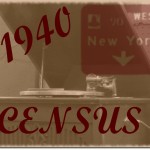
The genealogy community is alive with the spirit of giving and sharing as can be seen by the overwhelming efforts of volunteer indexers. As of April 20, 2012, the 1940’s Census Project has over 75,820 indexers.
Since the release of the census on April 2nd:
- So far, 14.2% has been completely indexed
- Colorado and Kansas have been completely indexed and are being processed in preparation for posting
- Delaware is posted online
- Nine states are 80% or more indexed and will soon be complete
Thanks to the extraordinary efforts of volunteer indexers, Family Tree buffs will soon be filling out their family Tree template with the census information of their recent ancestors who were living in the United States in 1940.
Family search promises to keep all of us updated every few days with their progress, check with them regularly to find the release date for your state of interest. For genealogists eagerly awaiting records for specific states here is a list of states that have been posted to date:
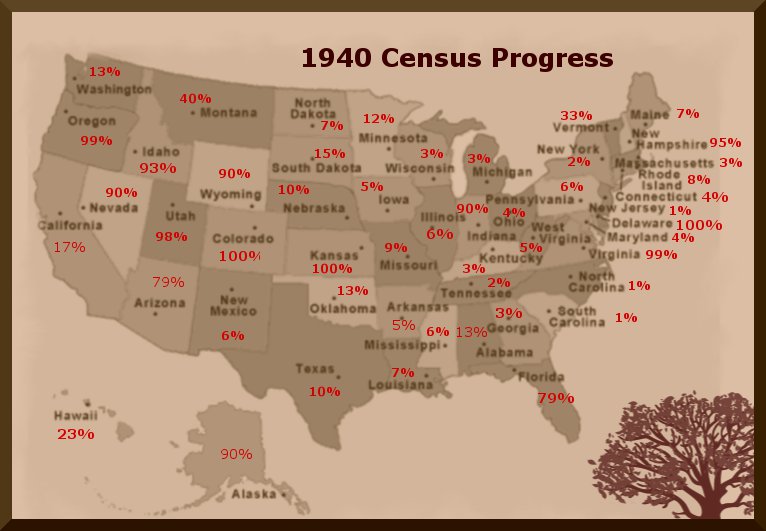
Genealogy Beginner thanks and congratulates all of the volunteer indexers for their heroic efforts. This is quite an accomplishment for the first week of indexing.
A Graphic Family in History
April 16, 2012 by ramona
Filed under Articles, Family History, Latest News, Preserving Your Family Tree
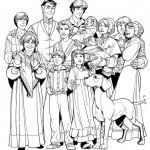 Family History books come in all shapes and sizes however I am not sure many genealogists ever expected to see one in the form of a graphic novel. The Loxleys and the War of 1812 is a book that records a monumental chapter in Canadian history through the premise of a family history.
Family History books come in all shapes and sizes however I am not sure many genealogists ever expected to see one in the form of a graphic novel. The Loxleys and the War of 1812 is a book that records a monumental chapter in Canadian history through the premise of a family history.
The idea to use a family tree to tell the story of the War of 1812 belongs to British expat, Alexander Finbow. Digging deep into letters and journals, Finbow researched families living in Upper Canada during this period in history. However, unable to settle on a single family the “Loxley’s” became a fusion of stories from several pioneering families.
The graphic novel is a factual telling of the war through the “Loxleys” a fourth generation Canadian family who are located in the Niagara Peninsula. Having left America following the American War of Independence, readers follow the family through the journals of “Aurora Loxley” who diligently records the involvement, trials and struggles of her family as they are thrust back into violence when America declares war on Britain and the Canadas.
A collaboration of artists, writers and historians The Loxleys and the War of 1812 is published by Renegade Arts Entertainment, written by Alan Grant with a summary by Canadian Military historian Mark Zuehlke, with illustrations by Claude St. Aubin and Lovern Kindzierski.
Although genealogically the story is indeed fictional, the concept of bringing a family history book to life through a graphic novel is intriguing and promises to be an enjoyable read for all interested in history and genealogy.
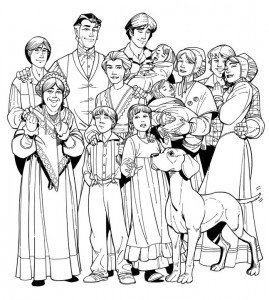
Image Courtesy of Claude St. Aubin with permission from Alexander Finbow
Titanic Records Released for 100 Year Anniversary
April 10, 2012 by ramona
Filed under Articles, Latest News
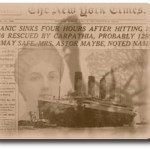 April 15th 1912 is the date that marks the sinking of the RMS Titanic. In remembrance of this, the 100th anniversary marking the loss of 1500 souls, a collection of over 200,000 records have been published.
April 15th 1912 is the date that marks the sinking of the RMS Titanic. In remembrance of this, the 100th anniversary marking the loss of 1500 souls, a collection of over 200,000 records have been published.
Included in the collection are:
- The Titanic’s Passenger List
- Information on Crew Members
- Coroners files
- Records about recovered bodies
Ancestry.com has released this data to correspond with the date of the ships sinking and until May 31 2012, access to this information is free. In addition to the above-mentioned records those interested in genealogy research involving the Titanic will have access to headstone photos of the 121 victims of the tragedy buried at the Fairview Cemetery in Halifax Nova Scotia.
Some exciting news for Titanic and Americana Historians is the inclusion of documents that reference John Jacob Astor IV (American Millionaire), Isador Straus (Macy Department store co-Owner) and Benjamin Guggenheim (businessman). Those who love celebrity genealogy will be thrilled to hear that the collection also include references to Margaret Brown who may be better known from movie fame as the “Unsinkable Molly Brown”.
Access to these records may aid Family Tree enthusiasts in solving their genealogy mysteries and lead to adding a few more names to your Family Tree Templates.
The Basics of Norwegian Genealogy
April 9, 2012 by ramona
Filed under Articles, Genealogy Searches by Place, Introduction to Genealogy, Latest News
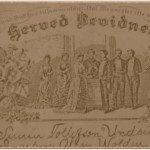 When tracing your Norwegian ancestors, you will learn that climbing your Norwegian Family Tree is a unique experience in genealogy research. From naming practices to language barriers and cultural differences, Norwegian genealogy is distinct in its resources and research techniques. In this article, Genealogy Beginner will pave your path with the basics of Norwegian genealogy research so you can start adding the names of your “Viking” forbearers to your family template.
When tracing your Norwegian ancestors, you will learn that climbing your Norwegian Family Tree is a unique experience in genealogy research. From naming practices to language barriers and cultural differences, Norwegian genealogy is distinct in its resources and research techniques. In this article, Genealogy Beginner will pave your path with the basics of Norwegian genealogy research so you can start adding the names of your “Viking” forbearers to your family template.
Ancestors From Norway: Getting Started
One of the first things you will need to understand about researching your ancestors from Norway is that the rules of following a single surname from generation to generation do not apply. Norwegian immigrants often took the name of the farm where they lived. This in itself can be a hint in your research. For example, in the case of two brothers, Johann Tollevson and Simon Tollevson who immigrated in the 1600’s one brother took the name Rugsveen and the other adopted the surname Undseth for the farms they were living on when they immigrated.
However once your research leaves the shores of North America your one name study ends. Prior to the 1900’s your Norwegian ancestors used a patronymic naming system where the child was given the first name of their father as a surname. In these cases, you will find, as in the case of the two brothers named above – Johann and Simon – that their fathers name was Tollev.
To get started digging for your Norwegian roots you will need your ancestors “Norwegian” name and date of birth along with the farm name where your ancestor lived. Although this may seem a little odd at first you will soon find that these peculiarities of Norwegian genealogy may be very helpful when searching out your ancestors from Norway.
Hints:
Norwegians were wonderful keepers of records and family bibles are very common
Norwegian dates are always written as…Day/Month/Year
Tools for Norwegian Genealogy
Once you have sorted out the names and dates of birth it is time to start gathering your research tools. Here is a short list to get you going.
– Family Tree Template
– Norwegian English Dictionary
– Word list for special terminology
Norway’s Genealogy Resources
Norway Church Registers
There are church registers for every parish in Norway with the oldest dating back to the mid 1600’s for some parishes. Records were recorded as both religious and and civil events for example a birth would be a civil event while a baptism is a religious event. Among the records of births, marriages and deaths you will often find entries of announcements made to the parish.
Norway Census
The earliest census in Norway took place in the 1600’s, these early census were called “Prestenes manntall” and recorded information for men, boys and sometimes widows. Sadly, Norway’s census records are incomplete and contain several errors, often with large parts of families missing. Beginning genealogists should know that Norwegian census is not considered a reliable source of information.
Bygdebok
Possibly the best resource for tracing your Norwegian ancestors is the Bydebok, a book of land records that contains a great deal of historic information. It often records a history of the families who owned the land… often into the 1300’s. Bygdebok are divided by communities listing the farms within one or two parishes and are a must have for anyone studying their Norwegian family history.
Other records available to genealogists are Probate, Mortgage and Tax Registers although like the census, the records are often incomplete.
The good news for anyone doing research on his or her ancestors from Norway is that there is a lot of information available on the internet. Join us on the Genealogy in General forum for a list of important links to get you started on your Norwegian genealogy.
Using DNA to Grow Your Family Tree: Guest Blog
April 5, 2012 by ramona
Filed under Articles, Getting Started in Genealogy, Introduction to Genealogy, Latest News
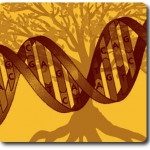 Genealogy Beginner Welcomes Guest Bloggers from the Sinclair DNA One name Study and the Salian DNA Project who have so wonderfully explained everything a genealogy beginner needs to know about how to use DNA testing to help with your genealogy research…and fill out your Family Tree Template!
Genealogy Beginner Welcomes Guest Bloggers from the Sinclair DNA One name Study and the Salian DNA Project who have so wonderfully explained everything a genealogy beginner needs to know about how to use DNA testing to help with your genealogy research…and fill out your Family Tree Template!
So what do you do when there are no more records to get you any further back in time on your family tree? Most of us get stuck at a brick wall which seems insurmountable and that’s where DNA comes in. By joining a DNA project and testing a male family member, you can compare that Y-DNA sample with others of the same surname.
Your Family Tree DNA: How It Works
Y-DNA is passed from father to son and contains a unique signature passed through the generations, which you share with the other project members. Another advantage is contact with others of the same surname to compare paper trails with and on top of that, you’ll find more relatives you didn’t have a clue existed, based all around the world.
In terms of cost, the least investment you can get away with is a 37 marker test and that would provide you with other matches of the same haplogroup as yourself. To be honest though, a 67 marker test though more costly, is far more revealing and those you matched at 37 markers will appear less closely related, whilst at 67 markers you can be fairly confident that those you match are descended from the same ancestor.
The closeness is measured in “genetic distance”; for example you could match exactly, or be one, two or more steps away in genetic distance from the other matches which will give a rough indication of how far back in time you relate to them.
DNA ONE-NAME STUDIES
There are plenty of one-name DNA studies on the internet but the majority of them use the www.FamilyTreeDNA.com laboratory for testing, mainly because they have the largest DNA database with 366,840 participants at the time of writing.
Some of these projects specialise in specific geographic areas and some in various ethnicities. For example, there are dedicated projects for those with Jewish, African or Native American ancestry as well as over 6,800 surname projects.
Not only can you compare your DNA with others of your own surname, you will be able to find matches across the whole of FamilyTreeDNA’s massive database as well which, strange as it may sound, can be extremely helpful in research terms.
Many adoptees have used DNA testing to find out who they really are by comparing their DNA results to the other surnames which show up in their matches, giving more clues to research their family history. You can join as many projects as you like or as many as are relevant to your family’s history and the other advantage of joining a project is a discounted price on the cost of your DNA test.
Just to be fair, there are other companies out there for example:
- Ancestry
- 23andme
- The Sorensen Molecular Genealogy Foundation
Who may be cheaper to test with than FamilyTreeDNA, but once those test results are in, there are considerably fewer other “testees” to compare your sample with and in the world of DNA testing for genealogical purposes, database size is everything!
DNA TESTS
Because DNA testing is still a relatively new science, using it to find relatives is the new frontier. Exciting developments are happening all the time and one of the latest such tools are “SNP’s” or “single-nucleotide polymorphisms”. These are small “mistakes” in the copying of DNA which occur just once and are then passed unchanged from generation to generation forever after.
Because they are much rarer, they are far more accurate in determining whether you relate closely to another potential match or not. The good news is that after the initial expense of a 37 or 67 marker test; testing individual “SNP’s” becomes more affordable when you want to take the plunge. That at least is a general outline of what happens.
Your Privacy
Privacy may be a worry for some, but your DNA sample is allotted a kit number and only that is shown on any project website along with the name of your earliest known ancestor and geographical location for him. (That is, provided you have signed a release form). If not, your DNA remains anonymous and no one will have access to it or your contact information. It’s your choice.
DNA is definitely a bit overwhelming at first; it’s true there is a lot to learn for the novice and it’s a constantly evolving science with new breakthroughs happening all the time, but that’s where your project leader should step in and explain what it means for you personally and for the project as a whole; advise whether it’s worth testing this or that.
DNA Communities
Most projects have forums on Yahoo and Google or even on Facebook which are very informative and specifically targeted to the project or projects you have joined. There is nothing to stop you joining as many projects and forums as may be relevant to your family history.
A word of caution though; no one has all the answers yet and you should not jump in expecting that your project leader will necessarily be an expert in the DNA field, although in general they have access to population geneticists or other DNA boffins who are more than willing to help answer queries.
DNA and Realistic Expectations
Mainly these projects are run by slightly more experienced enthusiasts with the same goals as yourself. Also, you may or may not find someone else with a paper trail you can connect to yours immediately, so don’t expect miracles.
It may even take years for the magic to happen where you find that elusive document which connects you on paper as well as with DNA. However, the DNA alone, matching others in your project means you are related to them at some point since the adoption of surnames began around the 12th or 13th century and you have a shared history and that’s a fairly exclusive club!

The Salian DNA Project: A New Direction in Genealogy
Genealogy + DNA + Archaeology = An Exciting New Direction for Family Tree Fanatics
Just to illustrate what DNA plus historical and archaeological research can achieve for genealogy:
Archaeology and Your Family Tree
Archaeology is playing an important part alongside the historical record and the Y-DNA. From the archaeological record in recent years, two ancient gravesites containing multiple burials:
- one dated to 670AD in Ergolding, Bavaria in southern Germany
- another dated to between 1000 and 700BC in Lichtenstein in central Germany
Thirteen of the skeletons excavated have been DNA tested and the results from four of them, (one at Lichtenstein and three at Ergolding), were found to have a distinctive marker, the S21 SNP.
The Ergolding results are the most interesting of the two, as there were high-value grave goods found alongside the skeletons, indicating that these burials were related to the Merovingian royal household, (according to the archaeologists, Dr Vanek et al), hence the connection with the Salian Franks; the ancestors of the Merovingian dynasty.
When Archaeology Meets DNA
The S21 SNP was discovered back in 2004 by Professor Ken Nordtvedt of Montana State University who announced that it represented those with Frisian ancestry; [Frisia was located in what is now the Netherlands, Germany and Denmark on the North Sea coast of Europe] and the date for this SNP was determined to be approximately 4,000 years ago. We now know from subsequent research that there are several clades [or branches] below S21, which are younger than that.
Several SNPs have been discovered over the past year, which have added to our knowledge and brought us further forward in time to about 1,900 years ago. There is a clade (or branch) of this S21 SNP which is Frisian/Anglo-Saxon in origin because that is where the highest concentration of matching samples in the local population are found today, however, S21 has other clades within it as well, which may represent a different branches, perhaps from associated tribes. The Salian Franks were settled in Toxandria, in close proximity to Frisia, just directly south of there, in fact and their homeland became part of what we today know of as The Netherlands and Belgium.
Our ancestors were far more mobile than we perhaps imagine and moving around within northern Europe 4,000 years ago, intermingling with other tribes in other nearby areas, but with no documentation that far back, we are struggling through the fog of distant time. In the years to come, that fog may be eradicated altogether.
The Genealogy Aspect
A large number of participants in the Salian DNA Project are named Sinclair with ancestral links to Caithness, Orkney and Shetland. Through the work of population geneticists such as Dr Jim Wilson at the University of Edinburgh, we know that our ancestors carrying the S21 SNP have left more evidence of their existence in eastern Scotland and eastern England. Indicating that our ancestors crossed the North Sea and invaded Britain at some point back in time and while through historical research we can document our common ancestor as Rollo, a Norwegian Viking, our family shows no sign of matching Norwegian DNA, so the old history books may well need to be rewritten.
Dr Wilson’s research in Orkney and Shetland has isolated those Sinclairs carrying the S21 SNP as being descendants of the Earldom Sinclair line. His extensive database shows the majority of Sinclairs in Orkney carry this SNP in their DNA and historically, there were no Sinclairs in the islands until shortly before Earl Henry Sinclair was installed as Earl in 1379. His family, based at Roslin, in Midlothian on the east coast of Scotland also fits with the evidence found of the S21 SNP in Scotland.
Salian DNA
The Salian DNA Project was designed to link all associated surnames, which have a common male ancestor and show the S21 SNP in their Y-DNA. A large proportion of them are Sinclairs, but anyone, as long as they have that all-important S21 SNP in their Y-DNA, can join, just make contact at: http://www.familytreedna.com/public/ulvungardynasty/default.aspx
Through the Salian DNA study, we are gradually narrowing down the geographical area of our origins and we have learnt a lot over the years. By sharing research as well as our DNA results it has also become gradually clear that many people who adopted the Sinclair surname back in the past, were not actually related to one another.
Surnames began to be adopted very slowly after the Norman Conquest of Britain in 1066 and another complication is the problem of “non-paternity events” or illegitimate male children given their mother’s surname, adoption, or alternatively born as the result of an affair and raised as a Sinclair or St Clair.
DNA has a way of winkling out those who adopted the name for whatever reason and drilling down to find the genuine descendants of a known ancestor with a documented history in the geographical areas where a family was known to have been in the more recent past.
It’s an absorbing and contagious hobby, so come and join us when you’ve taken that all important DNA test!
To learn more about this exciting study please join us on the Discovery Panel Forum for some fantastic links.
